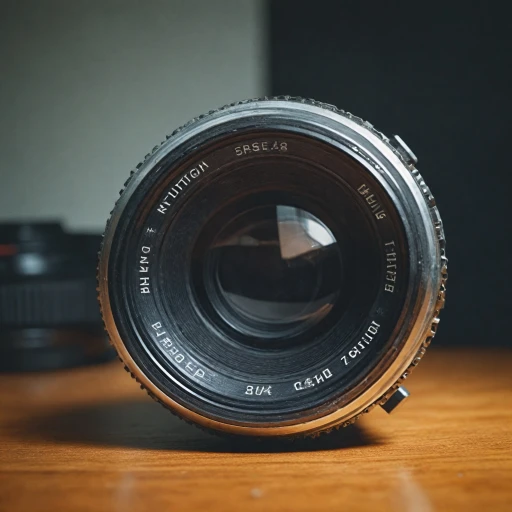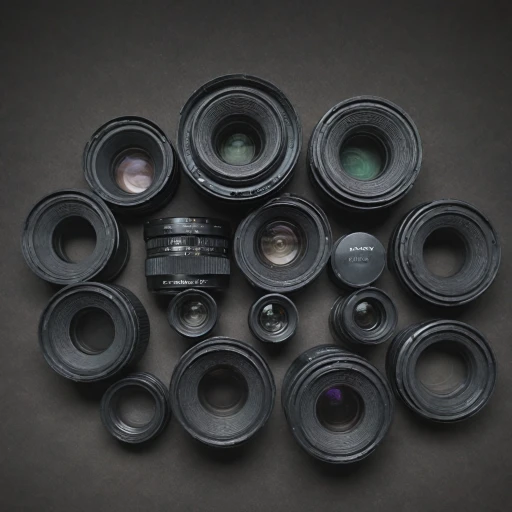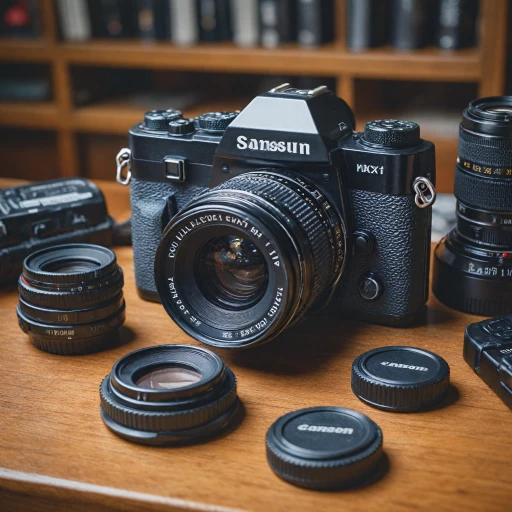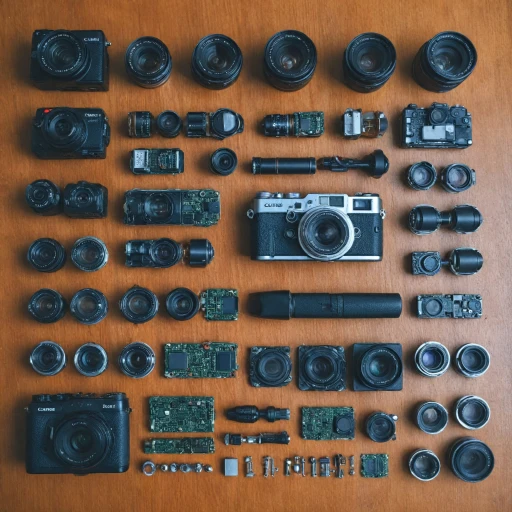What is IBIS Wobble in the Canon R5 Mark II?
Unveiling the IBIS Wobble Phenomenon
In the world of digital photography, particularly when discussing advanced models like the Canon EOS R5 Mark II, the term "IBIS wobble" resurfaces frequently. Integrated into the camera's system, the In-Body Image Stabilization (IBIS) is essential for minimizing camera shake. However, this innovative feature presents its own set of challenges, often referred to as the 'wobble' phenomenon. When the Canon R5 Mark II employs its sensor-shift stabilization, especially noticeable at slower shutter speeds or during video shooting, users may observe slight distortions on the edges of the frame. These distortions, known as IBIS wobble, generally manifest under specific conditions such as during handheld photo captures or when using wide lenses. Despite the EOS Mark's otherwise impressive image resolution and dynamic range, this wobble can sometimes impact the experience. Understanding this issue is crucial for photographers who rely heavily on electronic shutter and other features for their projects. When the IBIS wobble becomes a visible concern, it can affect the image quality—an issue that can dishearten many who seek the perfect shot. While Canon continues to enhance its stabilization technology, photographers using the mechanical shutter in mechanical mode often experience different performance results compared to electronic shutter settings. The impact of IBIS on photography extends beyond just the Canon line. Popular models like the Sony III cameras also integrate stabilization, though performance varies across different systems. Identifying the intricate details of this feature will help users to strategically navigate its challenges, ensuring the best possible capture every time. For those curious about the technicalities involved in such topics, further reading on subjects like optimal light seals in photography can shed additional light. Explore more through the guide on optimizing canon light seals here.Impact of IBIS Wobble on Photography
Effects on Image Quality and Photography Experience
The IBIS wobble in the Canon R5 Mark II can significantly impact the overall quality of your images. This issue arises when the in-body image stabilization (IBIS) system, designed to enhance image stabilization, inadvertently causes a distortion or 'wobble' effect, particularly noticeable in video mode. This can lead to a reduction in the sharpness and clarity of the captured image, which is crucial for photographers who rely on the camera's high resolution and dynamic range capabilities.
Influence on Shutter Speed and Image Stabilization
Photographers often depend on the IBIS system to allow for slower shutter speeds without sacrificing image sharpness. However, when the IBIS wobble occurs, the expected performance varies, and the benefits of slower shutter speeds are diminished. This can be especially problematic in low-light conditions where a faster shutter speed might not be feasible. The Canon EOS R5 Mark II's mechanical and electronic shutter options can help mitigate some of these issues, but the IBIS wobble can still affect the overall image stabilization.
Challenges in Video Mode and Subject Tracking
In video mode, the IBIS wobble can be even more pronounced, affecting the smoothness of the footage. This is particularly challenging for videographers who rely on the camera's ability to maintain consistent focus and subject tracking. The EOS Canon's advanced autofocus system may struggle to compensate for the instability introduced by the wobble, impacting the overall video quality and making it difficult to achieve professional results.
Comparing with Other Models
While the Canon R5 Mark II faces these challenges, it's important to note that other camera models, such as those from Sony, also have their own IBIS-related issues. For instance, the Sony III series cameras have been noted for their excellent image stabilization, but performance varies depending on the specific model and lens combination. Understanding these differences can help photographers make informed decisions about which camera best suits their needs.
For more insights on optimizing your photography experience, consider exploring understanding Canon A1 light seals for optimal photography.
Identifying the Causes of IBIS Wobble
Unveiling the Root Causes
The Canon R5 Mark II has been at the center of the IBIS wobble discourse mainly due to certain intrinsic and extrinsic factors related to the camera's integrated systems. As we delve into the causes behind this issue, several key elements come into play:- Sensor Stabilization Dynamics: The EBIS or In-body Image Stabilization system is designed to mitigate shakes during shooting, which would otherwise affect image quality. However, when it comes to the Canon R5 Mark II, the sensor's interaction can sometimes lead to what is known as the *wobble effect*. This effect can cause slight distortions, particularly noticeable around the edges of the frame when panning.
- Lens Compatibility and Variations: Different lenses interact differently with the IBIS system. For instance, while Canon lenses may have optimal calibration, certain third-party lenses might result in varying performance levels, accentuating the wobble. It becomes crucial for photographers to test and ensure lens compatibility for ideal results.
- Sensor Size and Full Frame Dynamics: The larger full-frame sensor, while enhancing resolution and dynamic range, brings additional stabilization demands. The Canon EOS series often showcases impeccable image stabilization, but even an enhanced system like that of the R5 Mark II may struggle under specific conditions, such as lower shutter speeds or high-speed movements.
- Integrated Mechanical and Electronic Shutters: The dual-mode shutter system—mechanical and electronic—can alter the performance of the image stabilization. Switching between these shutter modes might result in different stabilization outcomes, influencing the degree of wobble experienced.
Tips to Minimize IBIS Wobble
Effective Methods to Minimize IBIS Wobble in Your Photography
When working with the Canon R5 Mark II, or any camera implementing Image Stabilization (IBIS) systems, it’s essential to be mindful of techniques that can help reduce the occurrences of "wobble." While this camera’s sensor stabilization technology aims to enhance performance by reducing camera shake, varying shutter speeds and stabilization modes can impact the image outcome, particularly in dynamic range and resolution.
Here are some tips to help mitigate IBIS wobble:
- Use Faster Shutter Speeds: Higher shutter speeds can be crucial. When capturing fast-moving subjects or in video mode, using a faster shutter speed helps maintain sharpness, even as the IBIS system actively works to stabilize the shot.
- Engage Mechanical Shutter: Switching from electronic shutter to mechanical shutter mode can occasionally alleviate unwanted vibration effects since the initial activation of the mechanical shutter may bring noticeable steadiness to your shots.
- Consider Lens Selection: Using lenses with built-in stabilization features, especially with longer focal lengths, complements the IBIS system effectively, reducing the strain on the camera's stabilization mechanics.
- Manual Focus Consideration: In challenging lighting conditions or at certain frame rates, relying on manual focus may yield more precise results, minimizing potential instability related to continuous autofocus mechanisms.
- Shooting Mode Adjustments: Switching to specific shooting modes where the stabilization system operates most efficiently can lead to better control. Experiment with different presets and monitor outcomes under varying conditions.
Reducing IBIS wobble is often about understanding how the system interacts with your shooting environment and adjusting your approach to match the capabilities of the Canon EOS or any full-frame camera like the Sony III. While the EOS Canon models are known for robust image stabilization, consistent adjustment of shutter speed and stabilization settings based on the subject can greatly enhance overall image quality and sensor performance.








